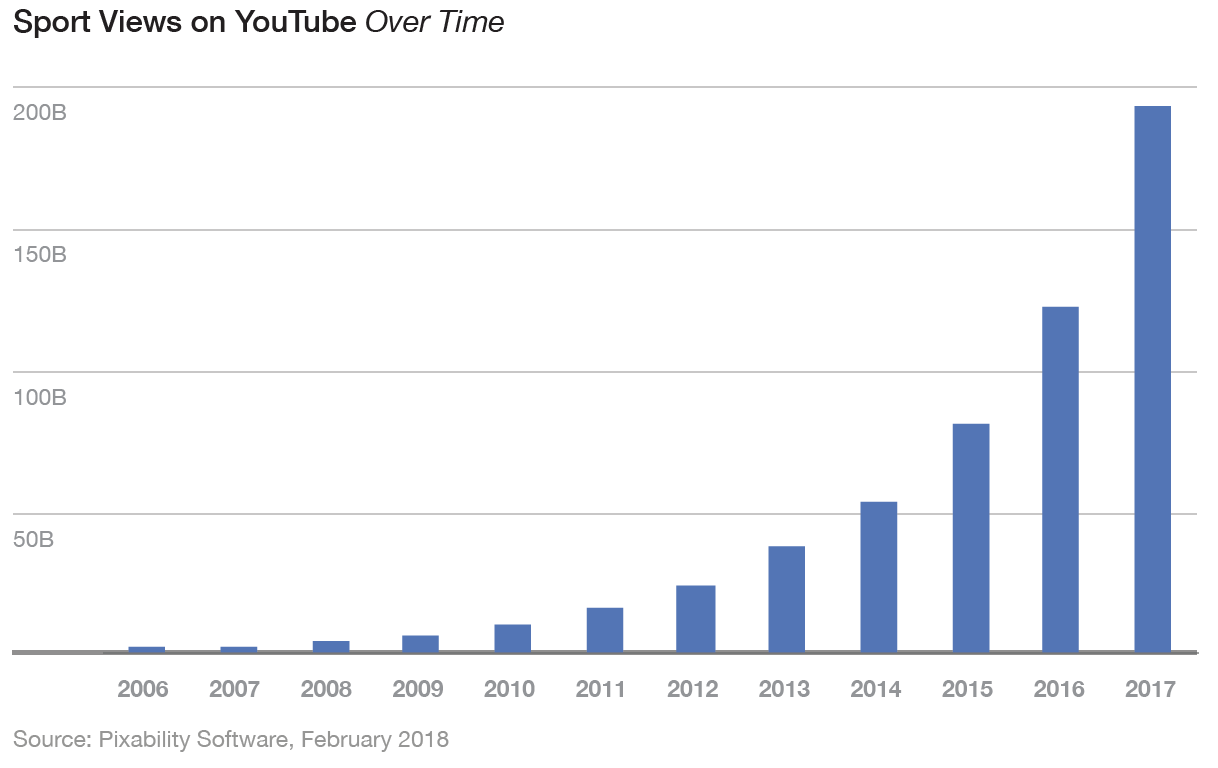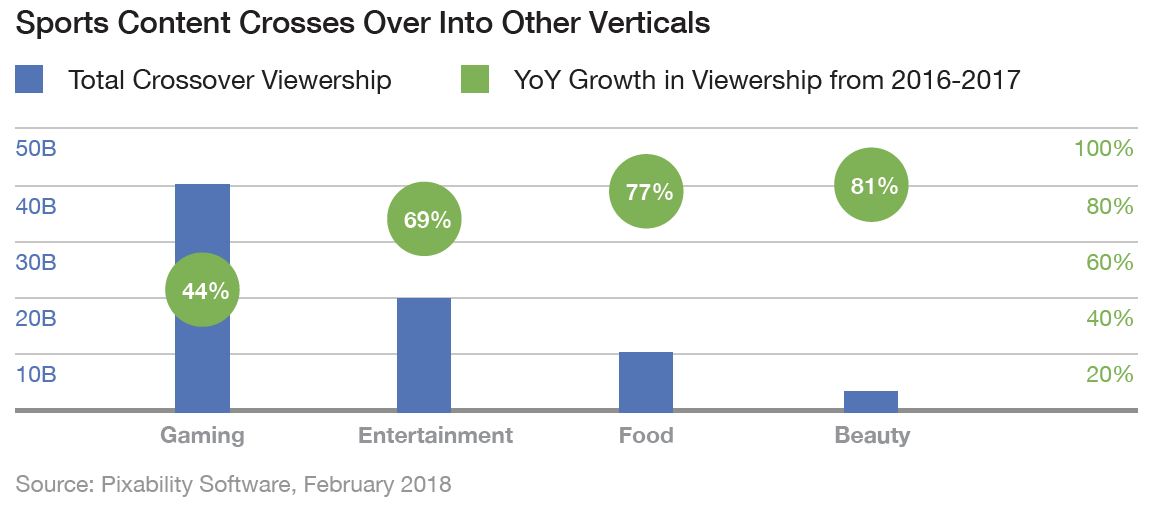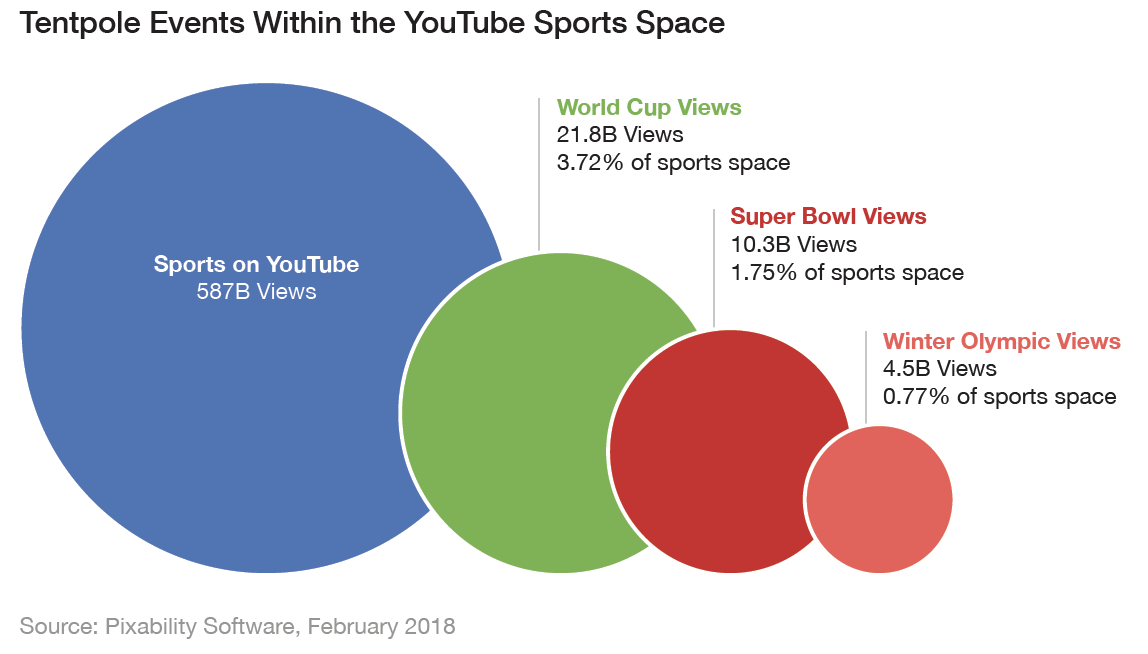Not an official sponsor of the World Cup? That doesn’t mean you can’t still participate in the massive World Cup conversation. The key to connecting with this passionate community of fans (which is already buzzing about the tournament 3 months out) lies in digital video.
Viewers are increasingly turning to video platforms like YouTube, Facebook, Twitter, and Snapchat to watch sports content and engage with events in real-time. In advance of the World Cup kickoff in June, we took a deeper look at the sports space on YouTube, with an eye toward 2018’s major sporting events — the Super Bowl, Winter Olympics, and World Cup — to isolate viewing behaviors and content trends, and ultimately help advertisers use learnings from the Super Bowl and Olympics as they plan for World Cup activations.
YouTube is a sports powerhouse, clocking in at more than 587B total views of athletic video content — more than double the 256B views across the beauty and personal care space on the platfrom — with views growing by 53% year-over-year over the last three years. Thanks to this year’s huge lineup of global tentpole events, Pixability’s data projects the sports space on YouTube will attract an additional 300B views in 2018. That presents a massive opportunity for advertisers large and small to join the conversation and engage their target audiences.

The sports space on YouTube isn’t confined to only athletic content, however. Sports content frequently overlaps with adjacent categories such as gaming, entertainment, and food. This means advertisers in complementary categories can capitalize on these niche adjacencies and insert their brand into the World Cup buzz in a meaningful way.

We know the Super Bowl gets a lot of attention for its ad lineup year after year, but surprisingly the World Cup takes the gold on YouTube with 21.8B views of related content, which is more than double the viewership of Super Bowl-related content.

Sports audiences turn to YouTube for more than just the sports content they can find on TV — beyond traditional game highlights and interviews, they’re looking for how-tos, celebrity fandoms, pro workout videos, and much more. The massive and passionate audience of sports content on the key video platforms means that advertisers — even those lacking TV-sized budgets or official World Cup sponsorships — can engage their specific consumers, in a targeted and meaningful way, at scale. The only question is, how will you take advantage of the sports fandom on YouTube in 2018?
For more data and insights on the YouTube sports space, download the full report.
Year of Sports: How advertisers can use digital video to join the sports conversation in advance of and through the World Cup
